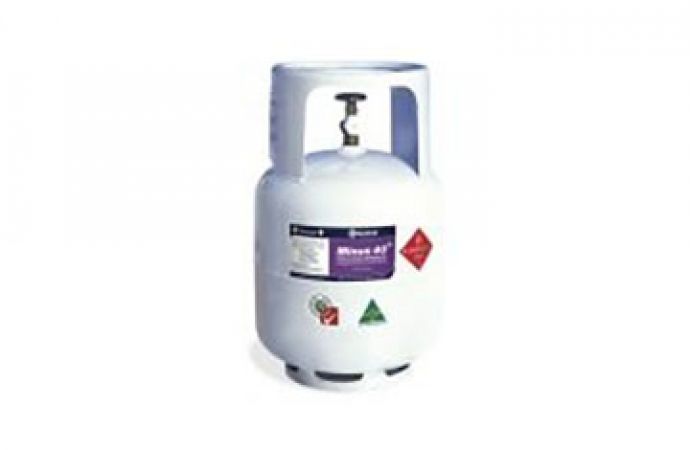A recent study shows that the flammability risk of R290 (propane) within horizontal type ice cream cabinets is negligible compared to background and other reference values. The research results show that the ignition frequency is between 1×10−8 and 2×10−13 per year. The maximum overpressure and thermal intensity within the room is 3 kPa and 200 s (kW m−2)4/3, respectively 6.5 kPa and 20 s (kW m−2)4/3

A recent quantitative risk assessment estimates the likelihood of ignition of leaked refrigerant and severity of the consequences within horizontal type ice cream cabinets (ICC). The study evaluated several variables including effect of room size, positioning of ICC, compressor compartment fan airflow and ignition source distribution. The flammability risk is expressed by the integrated risk of thermal intensity and of overpressure.
Risk of fire is 105 times lower than for household refrigerators
According to the study the ignition frequency for the baseline design in different room sizes and positions varied from about 2×10−13 to 1×10−8 per year. The frequency of secondary fires is lower by a factor of 100. The typical frequency of fire for household refrigerators is at least 105 times greater than the estimated frequency of secondary fire for ICC.
Maximum overpressure and thermal intensity not likely to cause damage
The maximum overpressure measured at approximately 6 kPa is unlikely to cause significant damage due to the fact that it is only present within the compressor compartment. The maximum overpressure is about one fortieth of the value necessary for direct fatality (above 250 kPa about 1% of cases would suffer fatality). The maximum overpressure within the room itself does not exceed 3 kPa, which could lead to breaking window glass. The maximum thermal intensity is around 200 (kW m−2)4/3, approaching the value that could cause blistering (250 s (kW m−2)4/3). However, the estimated values are not considered significant.
Several variables influence ignition flammability significantly
The effect of variables such as room size, ICC position, and extent of use of circulating fan were compared against the baseline situation. The main findings were as follows:
- Ignition frequency: For the baseline situation, the ignition frequency is estimated to be less than one ignition event in a population of 1 million ICCs over ten years.
- Compressor compartment fan on/off mode: The highest flammability risk is when refrigerant flows into the room when the compressor compartment fan is off. The risk during fan-on mode is less than 1% of the fan-off mode, whilst the risk for the compressor compartment is several orders of magnitude lower, due to absence of ordinarily active sources of ignition.
- Thermal intensity: the maximum thermal intensity over the entire set of conditions is around 200 s (kW m-2)4/3 and the maximum overpressure is about 6 kPa.
- Room size: When the ICC is installed in large rooms (35 m2) the risk is about ten times lower than in small room (12 m2) due to lower concentrations developing.
- Positioning of the ICC: If the ICC is in corner position, there is increased difficultly for the leaked refrigerant to exit the compressor compartment and further the effectiveness of the circulating fan airflow to disperse that release is reduced. The effect is more pronounced in larger rooms.
- Design of the ICC: A design of the ICC ensuring enhanced airflow (120 m3 h-1) leads to benefits for risk reduction, especially for the corner position.
- Source of distribution: Generally the different distributions of source of ignition have a minor impact on the ignition frequency and risk.
MORE INFORMATION
Related stories











_1490973133.png)

